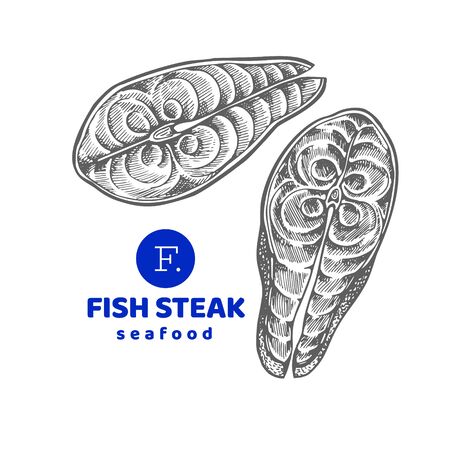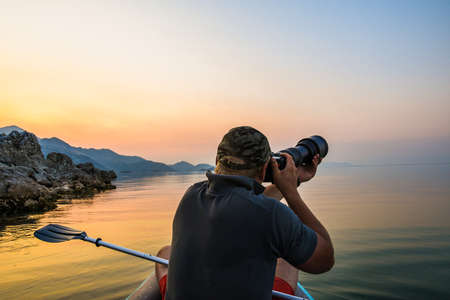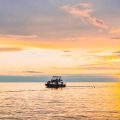Understanding the Dangers of Wreck Fishing in British Waters
Wreck fishing off the UK coastline is a thrilling pursuit, but it brings with it a host of unique dangers that every angler must respect. The waters surrounding Britain are notoriously unpredictable, with rapidly changing weather conditions capable of turning a promising outing into a perilous ordeal in minutes. Strong tidal currents, especially around submerged wrecks, can catch even seasoned skippers off guard, making precise boat handling and constant vigilance absolutely essential. Furthermore, the very structures that attract large fish—the wrecks themselves—are fraught with hazards: jagged metal edges, shifting debris, and entanglement risks for both anglers and their gear. These factors combine to make British wreck fishing a test not just of angling skill, but of seamanship and safety awareness. Understanding these inherent dangers is the first step in preparing for a safe and successful day at sea.
2. Essential Safety Gear and Equipment
When venturing out for wreck fishing in the unpredictable British waters, the right safety gear is not just recommended—it is absolutely vital. The UK coastline presents a unique set of challenges, from rapid weather changes to strong tides and cold sea temperatures. Preparing adequately with suitable equipment can make all the difference between a memorable angling trip and a dangerous situation.
Must-Have Safety Essentials for Wreck Fishing
| Equipment | Purpose | UK Best Practice |
|---|---|---|
| Lifejacket (150N or above) | Provides buoyancy and keeps you afloat in case you fall overboard. | Always wear, even on calm days; auto-inflate types are preferred for mobility. |
| PLB (Personal Locator Beacon) | Sends your location to rescue services if you’re in distress. | Register your PLB with the UK Maritime & Coastguard Agency and keep it accessible at all times. |
| VHF Radio (with DSC) | Enables emergency communication with the Coastguard and other vessels. | Carry a fully charged handheld VHF as backup, even if your boat has a fixed unit. |
| Wet Weather Clothing | Keeps you dry and insulated from hypothermia risks. | Layer up with breathable, waterproof gear; avoid cotton as it soaks up moisture. |
The Importance of Regular Equipment Checks
It’s crucial to inspect all safety gear before every outing. Test lifejackets for inflation integrity, verify that PLBs have functional batteries and up-to-date registration, ensure VHF radios are working and programmed with emergency channels, and check that your wet weather kit is free from tears or worn seams. Routine checks should be as much a part of your preparation as reviewing tide tables or weather forecasts.
Adapting to Local Conditions
British waters can be particularly cold—even during summer months—and conditions can deteriorate quickly. Always err on the side of caution by upgrading your gear rather than cutting corners. Investing in high-quality safety equipment designed for UK maritime environments is not only wise but could also save lives when things go awry offshore.

3. Best Practice in Navigation and Communication
For wreck fishing enthusiasts venturing into British waters, sound navigation and robust communication are not merely advantageous—they are essential for safety. British nautical charts, available through the UK Hydrographic Office, provide detailed information on underwater hazards, shipping lanes, and the precise locations of historic wrecks. Familiarising yourself with these charts before setting out is crucial for avoiding submerged dangers and respecting protected sites.
Utilising Nautical Charts Effectively
Always ensure you have the most up-to-date charts for your area of operation. Modern electronic chart plotters are widely used, but carrying a paper backup is wise in case of electronic failure. Pay special attention to depth contours, buoyage systems, and exclusion zones around sensitive wrecks. Knowing how to interpret chart symbols unique to British waters, such as cardinal marks and isolated danger buoys, can be a game-changer in tricky conditions.
Tidal Information: Timing is Everything
The UK’s tidal range is among the highest in the world, making tide tables an indispensable tool for any skipper. Consult official tidal predictions for your launch site and intended fishing grounds. Planning your trip around slack water can minimise strong currents, which often make anchoring over a wreck both challenging and hazardous. Remember that unexpected weather changes can amplify tidal effects, so always factor in real-time observations alongside published data.
Communication Protocols with Coastguard and Other Vessels
Reliable communication underpins all maritime safety procedures. Before departure, register your voyage plan with HM Coastguard using the CG66 or SafeTrx app—this ensures someone knows your intentions should you encounter difficulty. Carry a fully charged VHF radio as your primary means of contact; mobile phones may not have coverage offshore. Channel 16 should be monitored at all times for distress calls or urgent broadcasts. When operating near other vessels or commercial shipping lanes, maintain clear radio etiquette and use correct call signs to avoid confusion.
By adopting these navigation and communication best practices tailored to British waters, you’ll not only maximise your chances of a productive day’s fishing but also safeguard yourself and your crew against the unpredictable challenges of the sea.
4. Weather and Tidal Awareness
For anglers keen on wreck fishing in British waters, understanding weather conditions and tidal movements is not just a matter of improving catch rates—it is fundamental to safety. British seas are notoriously changeable, with rapidly shifting patterns that can turn a routine trip into a hazardous situation. By mastering the interpretation of Met Office marine forecasts and comprehending local tidal behaviour, enthusiasts can better safeguard themselves and their crew.
How to Read Met Office Marine Forecasts
The Met Office provides detailed marine forecasts tailored for UK waters, including wind speeds, sea state, visibility, and weather warnings. Here’s what you need to look for:
| Forecast Element | What to Watch | Impact on Wreck Fishing |
|---|---|---|
| Wind Speed & Direction | Check for gusts, especially over 20 knots | Strong winds make anchoring unsafe; may increase drift rate over wrecks |
| Sea State | Smooth, slight, moderate, rough or very rough conditions | Rough seas can swamp small boats; impacts comfort and safety when fishing around wrecks |
| Tide Times & Heights | Noted as high/low water with times and predicted heights (in metres) | Affects current strength; key for planning drifts and safe mooring at wreck sites |
| Visibility | Fog or mist warnings indicated in forecast text | Poor visibility increases collision risk; makes navigation around wrecks more hazardous |
| Weather Warnings | Yellow/Amber/Red warnings issued for severe events (gales, storms) | Certain warnings should mean postponing your trip entirely for safety’s sake |
Tidal Patterns: Why They Matter Around Wreck Sites
The tides around the UK are driven by both lunar cycles and local geography, producing some of the strongest currents in Europe. For wreck fishing:
- Slack Water: This short period between tides offers the safest window for anchoring directly over wrecks, minimising drag on anchor lines and reducing boat movement.
- Tidal Streams: Fast-flowing water during spring tides can make positioning difficult and dangerous near submerged hazards.
- Tidal Range: Large differences between high and low tide will alter the depth over wrecks—vital information when targeting specific species or using particular tackle setups.
Key Safety Tips When Interpreting Forecasts and Tides:
- Always consult the latest Met Office inshore waters forecast before departure.
- Use local tide tables or apps relevant to your chosen area—not all British coasts experience identical timings or heights.
- If in doubt about conditions, err on the side of caution—many experienced British anglers have learned this lesson the hard way!
- Never rely solely on a single forecast—cross-reference sources where possible for an up-to-date picture of changing conditions.
A Final Word on Preparation:
The unpredictability of British weather means that even well-planned trips can encounter surprises. A thorough understanding of both forecasts and tidal movements dramatically reduces risks, ensuring that your next wreck fishing adventure is memorable for all the right reasons.
5. Emergency Procedures and Rescue Protocols
Step-by-Step Response Strategies
No matter how well-prepared you are, emergencies can occur at sea—especially when wreck fishing in the unpredictable British waters. Knowing exactly how to respond can make the difference between a minor mishap and a life-threatening disaster. Here’s a structured approach to emergency response:
Step 1: Assess the Situation
Remain calm and quickly evaluate the severity of the incident. Identify immediate dangers such as fire, flooding, or someone overboard. Ensure all crew members are accounted for and safe, using clear and concise communication.
Step 2: Make Your Position Known
If the situation escalates, use your VHF radio to communicate your position and nature of distress. Always ensure GPS coordinates are readily available for an accurate location fix.
Step 3: Initiate Mayday Procedures
If lives are at risk or the vessel is in grave danger, issue a Mayday call on Channel 16 (156.8 MHz). The standard Mayday message should include:
“Mayday, Mayday, Mayday”
Your vessel name and call sign
Your current position (latitude and longitude or bearing from a known landmark)
The nature of your emergency
The type of assistance required
The number of people on board
Any other relevant information
Step 4: Utilise Safety Equipment
Deploy life jackets, lifebuoys, flares, or an EPIRB (Emergency Position Indicating Radio Beacon) as appropriate. Prepare life rafts if abandoning ship becomes necessary. Double-check that everyone knows where safety gear is stowed before departure.
RNLI Support: Your Lifeline at Sea
The RNLI (Royal National Lifeboat Institution) operates around the UK coastline and is your principal resource in maritime emergencies. Familiarise yourself with their local stations, coverage areas, and protocols before heading out.
Should you need assistance beyond your means, do not hesitate to request RNLI support through your Mayday call or by contacting the Coastguard. The RNLI’s volunteer crews are highly trained for rapid response in even the most challenging conditions.
Aftercare and Reporting
Once safe, report all incidents to the Coastguard for record-keeping and potential investigation. Review the event with your crew to identify lessons learned and improve future safety strategies. Remember, preparedness paired with knowledge of emergency protocols is essential for every British wreck fishing enthusiast venturing offshore.
6. Sustainable Fishing and Legal Considerations
Wreck fishing in British waters is a unique and rewarding pursuit, but it comes with a responsibility to protect the marine environment for future generations. Practising sustainable fishing not only preserves vital ecosystems but also ensures that the thrill of wreck angling remains available to all enthusiasts. Adhering to responsible practices begins with understanding the impact our actions can have on fragile underwater habitats.
Responsible Practices for Marine Protection
Sustainability starts with selective fishing techniques, such as releasing undersized or non-target species promptly and carefully. Use barbless hooks where possible to minimise injury, and avoid dropping anchor directly onto wrecks or reefs to prevent damaging these important habitats. Always dispose of litter, lost tackle, and bait packaging responsibly—marine debris is a major threat to sea life along the UK coastline.
Respecting Spawning Seasons
Many popular target species around British wrecks, such as cod and pollack, have defined spawning seasons. Familiarise yourself with these periods and limit or avoid fishing during sensitive times to support healthy fish populations. This not only aligns with best practice but demonstrates respect for both the sport and the environment.
Understanding UK Wreck Fishing Laws
The United Kingdom has clear legal frameworks governing wreck fishing activities. It’s crucial to be aware of restrictions under the Protection of Wrecks Act 1973, which designates certain sites as protected due to their historical or ecological significance. Fishing within these exclusion zones without proper consent is a criminal offence. Additionally, many areas fall within Marine Protected Areas (MPAs), which may impose further limitations on anchoring, gear use, or catch limits.
Permits and Reporting Requirements
If you intend to recover artefacts or dive on designated wrecks, specific permits are required from relevant authorities such as Historic England or local maritime agencies. Anglers should also keep abreast of changing regulations regarding minimum landing sizes and daily bag limits published by the Environment Agency and Inshore Fisheries and Conservation Authorities (IFCAs). Ignorance of the law is no defence; always check up-to-date guidance before each trip.
By embracing sustainable methods and staying informed about legal obligations, British wreck fishing enthusiasts can enjoy their passion while safeguarding both heritage sites and marine biodiversity for years to come.


